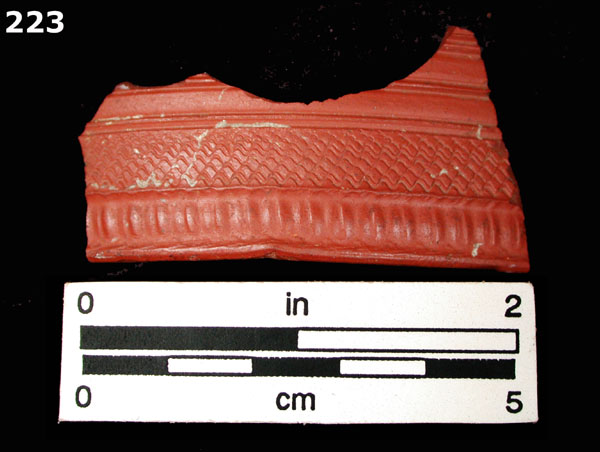View all examples of STONEWARE, ELERS-TYPE

| Type Name: | STONEWARE, ELERS-TYPE |
| Type Index: | STONEWARE |
| Production Origin: | ENGLAND |
| Date Range: | 1690-1800 |
| Defining Attributes: |
Thin, fine-grained stoneware body, usually dark red or brownish red in color. Can be wheel thrown, slip cast or molded, and turned on a lathe. Unglazed surface. Vessels are often decorated with die-stamped relieves of floral, animal and human figures; sprig designs, or geometric engine turning |
| Vessel Forms: |
COFFEE POT MUG TEA POT TEACUP VASE |
| Comments: | Also called "Dry-Bodied Stoneware", this fine red stoneware was first produced in England in the late seventeenth century by John Dwight, who patented wheel-thrown red stoneware vessels in 1684. They were copied by the Dutch Elers brothers, who moved to Staffordshire and continued to produce the red stoneware by slip casting until about 1700. There was a hiatus in production between ca. 1700 and ca. 1750, when many Staffordshire potters, including Josiah Wedgewood, began to produce both wheel thrown and molded dry bodied stoneware vessels. The Engine turned pieces date from after 1760. |
| Published Definitions: | Noel Hume 1970; South 1977; Elliott 1998; http://www.jefpat.org/diagnostic/Historic_Ceramic_Web_Page/Historic_Main.htm |